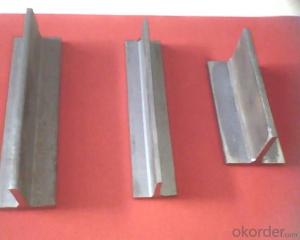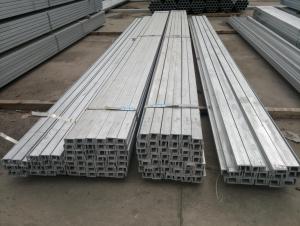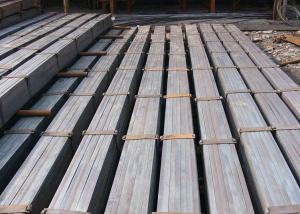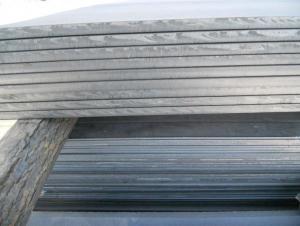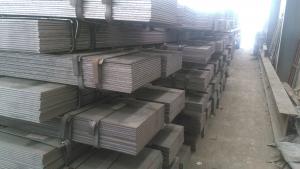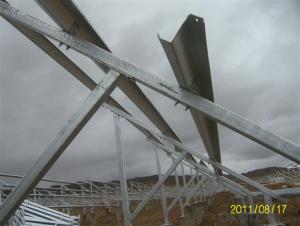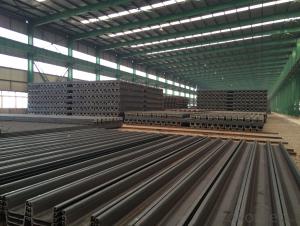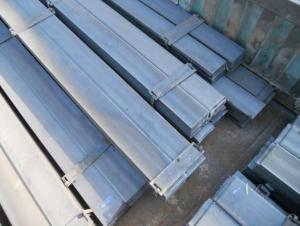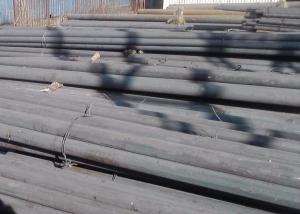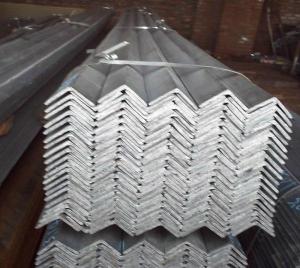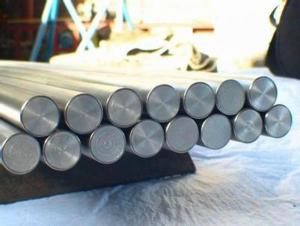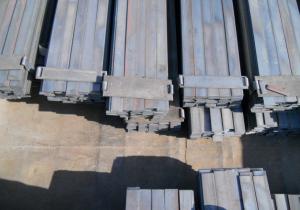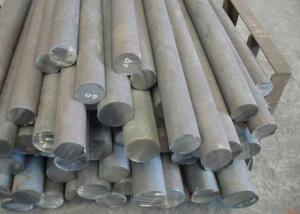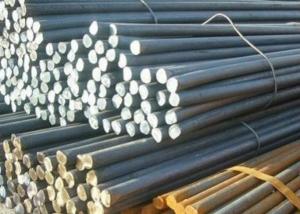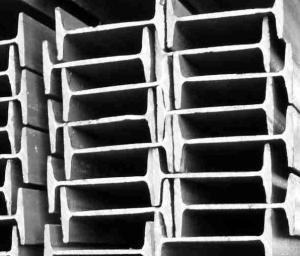Galvanized Steel T Form Bar Zinc Coating for Various Uses
- Loading Port:
- China main port
- Payment Terms:
- TT or LC
- Min Order Qty:
- 25 m.t.
- Supply Capability:
- 10000 m.t./month
OKorder Service Pledge
OKorder Financial Service
You Might Also Like
1. Structure of Galvanized Steel T Form Bar Zinc Coating Description:
Galvanized steel T form bar zinc coating is a beam with an I-shaped cross-section. The horizontal elements of the "I" are known as flanges, while the vertical element is termed the "web". Galvanized steel T form bar zinc coating is usually made of structural steel and is used in construction and civil engineering. The galvanized steel T form bar zinc coating resists shear forces, while the flanges resist most of the bending moment experienced by the beam. Galvanized steel T form bar zinc coating theory shows that the I-shaped section is a very efficient form for carrying both bending and shears loads in the plane of the web.
2. Main Features of Galvanized Steel T Form Bar Zinc Coating:
• Grade: Q235
• Type: Mild carbon steel
• Deflection: The stiffness of the I-beam will be chosen to minimize deformation
• Vibration: The stiffness and mass are chosen to prevent unacceptable vibrations, particularly in settings sensitive to vibrations, such as offices and libraries.
• Local yield: Caused by concentrated loads, such as at the beam's point of support.
3. Galvanized Steel T Form Bar Zinc Coating Images:
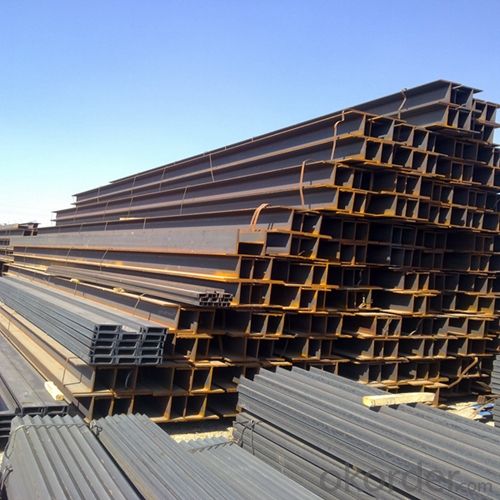
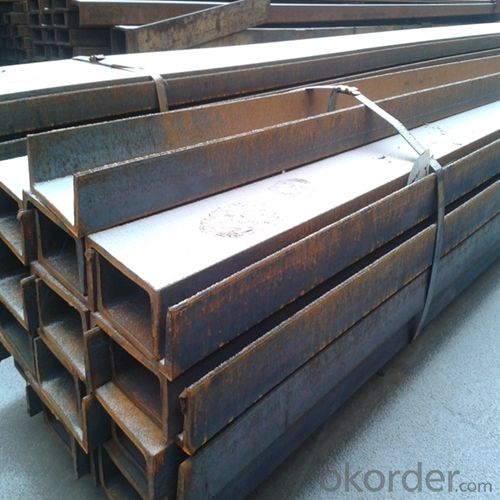
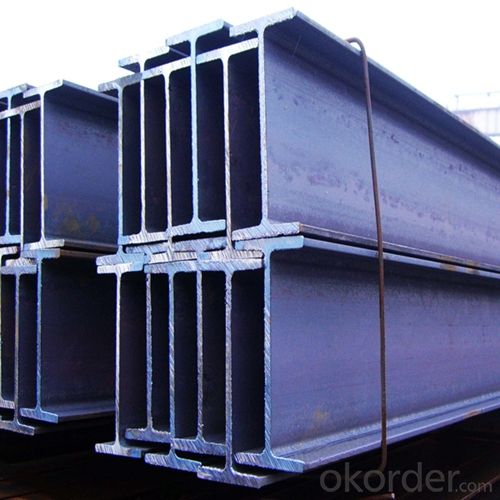
4. Galvanized Steel T Form Bar Zinc Coating Specification:
Alloy No | Grade | Element(%) | ||||
C
| Mn
| S
| P
| Si
| ||
Q235
|
B
|
0.12—0.20 |
0.3—0.7 |
≤0.045 |
≤0.045
|
≤0.3
|
Alloy No | Grade | Yielding strength point(Mpa) | Tensile strength (Mpa) | Elongation after fracture(%) | ||||||
Thickness (mm) | Thickness (mm) | |||||||||
≤16 | >16--40 | >40--60 | >60--100 | ≤16 | >16--40 | >40--60 | >60--100 | |||
≥ | ≥ | |||||||||
Q235 |
B |
235 |
225 |
215 |
205 |
375--500 |
26 |
25 |
24 |
23 |
5. FAQ
We have organized several common questions for our clients,may help you sincerely:
①Is this product same as W beam?
In the United States, the most commonly mentioned I-beam is the wide-flange (W) shape. These beams have flanges in which the planes are nearly parallel. Other I-beams include American Standard (designated S) shapes, in which flange surfaces are not parallel, and H-piles (designated HP), which are typically used as pile foundations. Wide-flange shapes are available in grade ASTM A992,[4] which has generally replaced the older ASTM grades A572 and A36.
②How to inspect the quality?
We have a professional inspection group which belongs to our company. We resolutely put an end to unqualified products flowing into the market. At the same time, we will provide necessary follow-up service assurance.
③Is there any advantage about this kind of product?
Steel I beam bar IPE has a reduced capacity in the transverse direction, and is also inefficient in carrying torsion, for which hollow structural sections are often preferred.
- Q:How to distinguish cold formed section steel and hot rolled section steel?
- Cold-formed steel is a product of various cross sections bent in cold form with steel plates or strips. Cold formed section steel is an economical light section steel, also called cold-formed steel section or cold bending section. Cold-formed steel is the main material for making light steel structures. It has various kinds of super thin and reasonable shapes and complicated sections which can not be produced by hot rolling. Compared with hot-rolled steel, in the same section area, turning radius can be increased by 50 ~ 60%, moment of inertia can be increased 0.5 ~ 3 times, so it can be more reasonable to use the strength of the material; and ordinary steel structure (from traditional I-beam, channel steel and angle steel and steel plate made of steel structure comparison) that can save steel by 30 ~ 50%.
- Q:What kind of steel is used in steel columns?
- Section I and H of steel reinforced piles belong to the common section shapes in steel reinforced concrete piles. I and H type steel piles can be used in horizontal load and vertical load bearing. The steel pile has stronger penetration ability in many kinds of strata, moreover, its disturbance to stratum is slight, it is a kind of partly squeezed soil pile. If the distance between the driving pile and the center is smaller, the H steel pile can be used to replace other piles to prevent the ground fault caused by piling operation, such as lateral extrusion, uplift and so on.
- Q:What does "BH" mean?
- In accordance with the different smelting quality of steel, steel is divided into ordinary steel and high quality steel. According to the current catalogue of metal products, ordinary steel can be divided into large section steel, medium section steel and small section steel. The section steel can be divided into I-beam, channel steel, angle steel, round steel and so on according to its sectional shape.
- Q:Does the profile include H?
- Another reason is that H steel is made late in our country, so people are used to distinguish it from other shapes. But in the strict sense, H steel is a kind of section bar.
- Q:Elastic modulus of section steel
- Generally speaking, the elastic body exerts an external function, and the elasticity experiences the change of the shape (called strain). The general definition of the elastic modulus is that the stress is divided by the strain. When the material is in the elastic deformation stage, its stress and strain should be changed into a positive proportion (that is to say, according to Hooke's law), and the coefficient of proportionality is called the elastic modulus.
- Q:What are the common types of profiled steel?
- Complex section steel has: I-beam, channel steel, steel, elevator rail, steel sheet pile, and various kinds of agricultural machinery, machinery manufacturing and construction of special-shaped steel.Section steel according to production methods are: hot-rolled steel, cold-formed steel, welding, H steel, etc.
- Q:What is special steel?
- Reinforcing bars for reinforced concreteIs a small type steel reinforced concrete. Including hot rolled round steel bar and prestressed concrete with reinforced concrete, thermal cold rolled steel. Steel reinforcement strip. In addition, also known as the other thread steel. Because the steel in rolling surface of rolled thread handle or reinforcement, steel reinforced concrete is in the construction industry reinforced. According to the material yield point and tensile strength, I, II, III and IV grade steel. The steel bars are used directly. The rebar, reinforced concrete to stress by heat treatment after heat treatment of high strength, but does not apply to steel welding and spot welding, reinforced by 40Si2Mn, 48Si2Mn, 45Si2Cr etc. steel after heat treatment is made, nominal diameter 6, 8.2, 10 mm. Cold rolled ribbed bar with Q215, Q235, 24MnTi steel, nominal diameter 4-12 mm. Steel after heat treatment should be rolled into plate, to heat treatment delivery.
- Q:What does "M" mean?
- Section steel is a strip steel with definite section shape and size. It is one of the four big kinds of steel (plate, tube, mould, wire). According to the section shape, the section steel is divided into simple section steel and complex section steel (deformed steel).
- Q:Can the section steel butt joint in the end?
- Shape steel can butt joint, but pay attention to the quality of welding.Because of the lack of groove, it is impossible to use common arc welding. Recommended laser welding (if required for high strength). The quality of welding can be referred to the GB of welding.
1. Manufacturer Overview |
|
|---|---|
| Location | |
| Year Established | |
| Annual Output Value | |
| Main Markets | |
| Company Certifications | |
2. Manufacturer Certificates |
|
|---|---|
| a) Certification Name | |
| Range | |
| Reference | |
| Validity Period | |
3. Manufacturer Capability |
|
|---|---|
| a)Trade Capacity | |
| Nearest Port | |
| Export Percentage | |
| No.of Employees in Trade Department | |
| Language Spoken: | |
| b)Factory Information | |
| Factory Size: | |
| No. of Production Lines | |
| Contract Manufacturing | |
| Product Price Range | |
Send your message to us
Galvanized Steel T Form Bar Zinc Coating for Various Uses
- Loading Port:
- China main port
- Payment Terms:
- TT or LC
- Min Order Qty:
- 25 m.t.
- Supply Capability:
- 10000 m.t./month
OKorder Service Pledge
OKorder Financial Service
Similar products
New products
Hot products
Hot Searches
Related keywords
